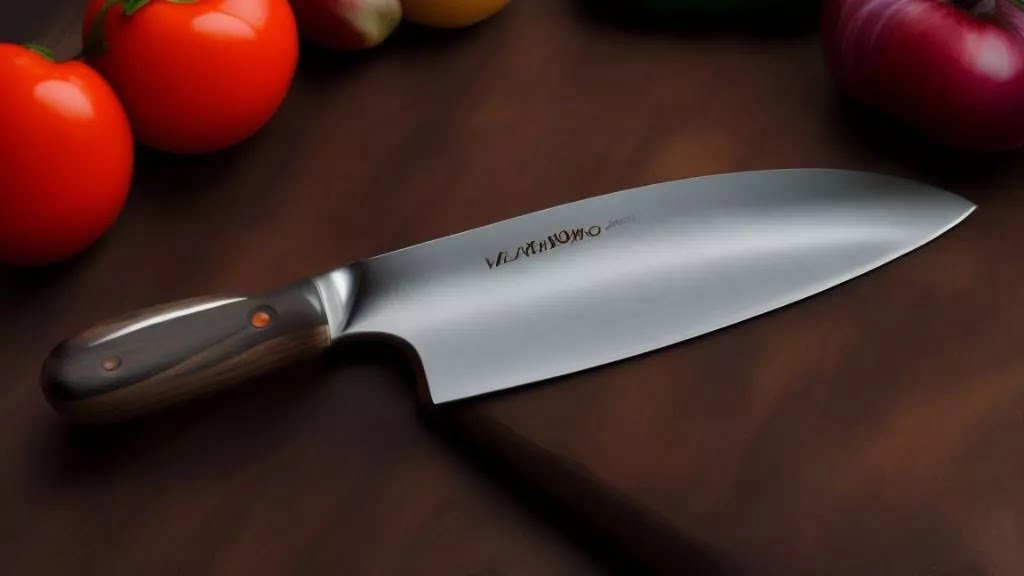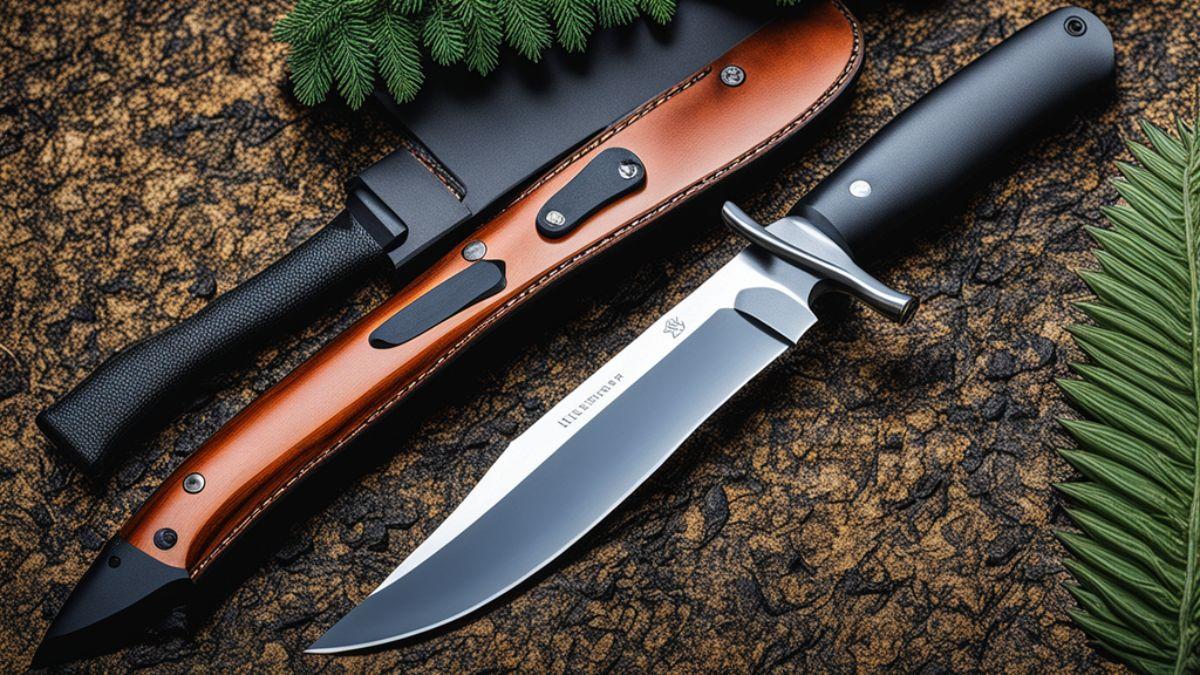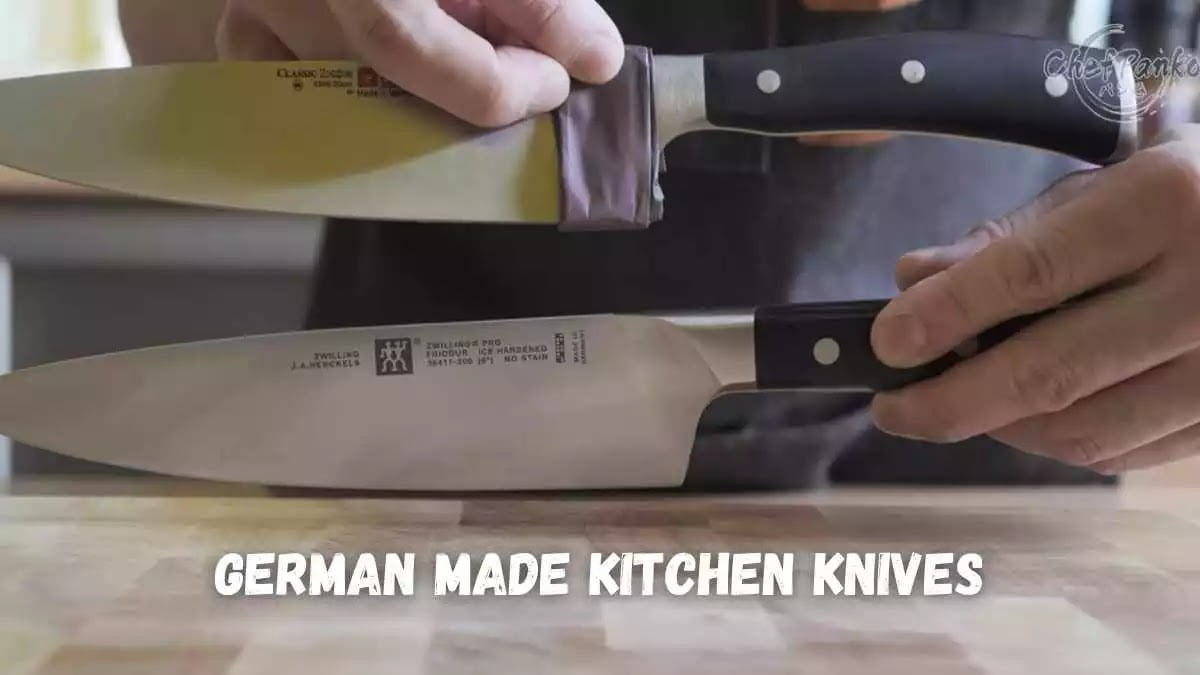
We may earn money or products from the companies mentioned in this post.
You know you need a new kitchen knife, but you’re torn between a chef’s knife and a vegetable knife. Both sound very helpful, don’t they? Chef knives are more of an all-purpose instrument that can handle practically any cutting operation, whereas vegetable knives are made primarily for slicing and chopping vegetables with accuracy. Ultimately, the decision boils down to your preference for specialization over variety. A vegetable knife is most likely your best friend if you chop huge amounts of carrots, tomatoes, and cucumbers all the time. However, a chef’s knife is the best option if you want a knife that can be used for both chopping meat and slicing onions at the same time. In any case, having a good knife in your kitchen is essential for efficient and pleasurable food preparation. Which one will it be, is the only question left.
Vegetable Knife vs Chef Knife: What’s the Difference?
When it comes to essential kitchen knives, the vegetable knife and chef’s knife are two of the most useful. While they may seem similar, there are some key differences to consider before you buy.
Purpose
A vegetable knife, as the name suggests, is designed specifically for cutting vegetables. It typically has a blade of 6 to 8 inches and is lightweight, making it easy to maneuver. A chef’s knife is a more versatile tool meant for cutting a variety of foods. It has a longer, heavier blade, usually 8 inches or more, suitable for cutting meat, vegetables, and fruit.
Design
Vegetable knives often have a pointed tip and scalloped blade to grip vegetables. A chef’s knife has a stronger, wider blade that tapers to a point. It is better suited for heavy-duty cutting and chopping. The blade shape and weight distribution also make a chef’s knife ideal for rocking cuts.
Cost
You’ll typically pay less for a vegetable knife. A high-quality chef’s knife is an investment but will last a lifetime with proper care. If budget is a concern, a chef’s knife should be your priority. You can always get an inexpensive vegetable knife to supplement it.
In the end, it comes down to how you like to cook and the types of food you prepare most often. An avid home chef may want both knives in their arsenal, using the vegetable knife for finer work and the chef’s knife as an all-purpose tool. For basic cooking, a chef’s knife alone can do the job nicely. The choice is yours, so think about your needs and chop happily!
The Many Uses of the Versatile Chef’s Knife
A chef’s knife is the workhorse of any kitchen. This versatile tool can accomplish so many tasks that you’ll find yourself reaching for it again and again.
Chopping vegetables
A chef’s knife excels at chopping vegetables of all kinds. It’s wide blade and curved edge are perfect for slicing, dicing, and mincing everything from carrots and cucumbers to leafy greens. The weight and balance of a chef’s knife also make quick work of bulk chopping for soups, stews, and salads.
Cutting meat
Chef’s knives can also be used to cut meat, whether you’re slicing a roast, cubing beef for stew, or chopping chicken. Look for a knife with a pointed tip and a blade that’s at least 8 inches long for cutting larger pieces of meat. A shorter blade will also work, you may just need to cut the meat into more manageable pieces first.
Fruit prep
A chef’s knife handles fruit with ease. Use the tip of the blade to hull strawberries, slice apples, chop pineapple or melon. A chef’s knife can even be used to split citrus fruit or coconut when you need juice or milk.
Miscellaneous tasks
There are so many other ways a chef’s knife comes in handy. Use it to mince garlic and shallots, slice bread, cut sandwiches and subs, chop herbs, crush spices, scrape bowls, and more. Its versatility is what makes a chef’s knife such an essential tool for any home cook.
With a quality chef’s knife in your kitchen, you’ll be slicing, dicing, and chopping with confidence and ease. Treat it right, and this knife will quickly become your indispensable kitchen sidekick.
Why a Vegetable Knife Excels at Cutting Produce
A vegetable knife is specially designed for slicing and dicing fruits and vegetables. Compared to a chef’s knife, a vegetable knife typically has a shorter, thinner blade that is easier to maneuver on cutting boards. The blade is also often serrated, which helps grip vegetables and cut through their skins.
Sharp and Precise
The most important quality of a vegetable knife is that it remains razor-sharp. Dull knives require more force and can slip, increasing the chance of injury. Sharper knives glide through produce with ease and precision. For the best results, hone your vegetable knife regularly and have it professionally sharpened once a year or so.
Comfort and Control
A vegetable knife should feel comfortable and balanced in your hand. Look for a knife with an ergonomic handle that provides a secure grip. A knife that feels awkward or heavy can lead to fatigue and less control. The ideal size of a vegetable knife depends on the size of your hands and the types of produce you cut, but a 6 to 8-inch blade is versatile for most cooks.
Serrated or Straight Edge
For most vegetables, a serrated knife works well since the teeth can grip the produce. However, for thinly slicing some vegetables like cucumbers or slicing potatoes for chips, a straight edge may be preferable. Consider getting one of each, or look for a knife with a partially serrated blade.
Cuts Like Julienne and Brunoise
A quality vegetable knife allows you to produce precise cuts for various recipes. With some practice, you’ll be slicing, dicing, and julienning with ease. A sharp knife is essential for accomplishing brunoise, which is 1/8-inch cubes, or fine julienne, which are matchstick cuts. Take your time and be careful, as very sharp knives can lead to cuts if mishandled.
With the right technique and a high-quality vegetable knife designed for the task, you’ll breeze through prep work and have perfectly cut veggies for your culinary creations. A good knife is an investment, so take time to find one that feels balanced and comfortable for you. Your fingers and taste buds will thank you!
Key Features to Look for in a Quality Vegetable Knife
When choosing between a vegetable knife and a chef’s knife, think about how you like to cook and what tasks you perform most often in the kitchen. A quality knife that suits your needs can make meal prep so much more enjoyable.
Blade Material
For the best results, look for a knife with a high-carbon stainless steel blade. This material holds an edge well and is resistant to stains and corrosion. German steel and Japanese steel are also excellent options. Avoid cheap knives with blades that don’t specify the type of steel—they won’t hold an edge, and you’ll end up frustrated.
Blade Shape and Size
If you do a lot of slicing and dicing of veggies, a vegetable knife with a blade between 6 to 8 inches will work great. A chef’s knife is a bit more versatile, with a slightly curved 8- to 10-inch blade that can handle most cutting tasks. For precision work, a smaller blade is easier to maneuver. Larger blades are better for cutting large foods and working efficiently.
Handle Design
The handle should feel comfortable and secure in your hand. Wood, plastic, or steel handles in a classic style provide a good grip. An ergonomic or contoured handle helps reduce fatigue over long periods of use. Avoid handles that are too short, as this can make the knife awkward to use.
Additional Features
A full tang, meaning the blade extends into the handle, provides the most durability. A bolster, the thick metal section between the blade and handle adds balance and safety. A forged blade, made from a single piece of steel, holds an edge better than a stamped blade.
Whether you choose a versatile chef’s knife or a specialized vegetable knife, it comes down to how you work in the kitchen and your cutting needs. Look for high-quality, sharp knives that feel good in your hand so you can work quickly and safely. With the right tools, cooking at home can be an absolute joy.
What to Consider When Buying a Chef’s Knife
When choosing between a chef’s knife and a vegetable knife, several factors determine which is right for you. Think about how you cook and what’s important for your needs.
Blade size
Do you routinely cook for a crowd or just yourself? A larger 8-inch chef’s knife is ideal for chopping lots of veggies and meat. For smaller tasks, a 3- to 4-inch paring knife or utility knife may suit you better. Chef’s knives also come in smaller sizes, if you prefer.
Blade shape
Chef’s knives typically have a curved blade to make rocking cuts easy, while vegetable knives often have a straight blade for push cuts. A curved chef’s knife allows for fluid chopping, slicing, and dicing of most foods. A straight blade can be better for precise cuts of round veggies like tomatoes. Consider which cutting motion you prefer.
Blade material
High-carbon stainless steel blades hold an edge best, but carbon steel is easier to sharpen. German knives are often more affordable, while Japanese knives tend to be sharper. Ceramic blades hold an edge for a long time but are more brittle. Choose a material that fits your budget and how often you want to sharpen.
Handle comfort
The handle affects how a knife feels in your hand. A rounded handle may be more ergonomic, while a straight handle allows for more precise control. Bolsters at the base of the blade also add weight but can make sharpening difficult. Try different handles to determine what’s most comfortable for you.
Added features
A chef’s knife often has a bolster and heel for safe cutting, while a vegetable knife typically lacks these features. A full tang, extending into the handle, provides the most durability. A riveted handle will last longer than a glued one. Look for a knife with features that match how much use it will get.
In the end, choosing between a chef’s knife and a vegetable knife comes down to how you like to cook and personal preference. With so many options available, you can find an excellent knife to suit your specific needs. Focus on the factors important to you, and you’ll be chopping in no time!
Proper Technique for Using a Vegetable Knife
A vegetable knife is designed specifically for slicing and dicing vegetables. To get the most out of your vegetable knife and achieve clean, precise cuts, follow these tips:
Select the right knife for the job
Choose a knife size that suits the vegetable you want to cut. For larger veggies like cabbage and squash, use a larger blade, like an 8-inch knife. For smaller items like shallots, opt for a 6-inch blade. A serrated knife works well for tomatoes, while a curved blade is ideal for cucumbers.
Keep your knife sharp
A sharp knife will glide through vegetables with ease, requiring less pressure and yielding an even cut. Use a whetstone to manually sharpen your knife or have it professionally sharpened every few months. A dull knife is dangerous and requires excess force, often resulting in slippage and cut fingers.
Maintain a proper grip
Hold the knife with your index finger placed along the top of the blade, and wrap your remaining fingers around the handle. Keep your wrist straight and locked, and use your whole arm to move the knife using smooth slicing motions. A proper grip and slicing technique will give you better control and more consistent results.
Cut on a stable surface
Always cut vegetables on a clean, sturdy cutting board. A wooden or plastic cutting board is gentle on knife edges and provides a stable base. Do not cut vegetables in your hand, as this is unsafe and will not yield uniform pieces.
Make clean cuts
Work slowly and deliberately, using smooth slicing motions. Apply even pressure as you cut, drawing the knife through the vegetable using a straight up-and-down motion. Do not see back and forth, as this can crush the vegetable and make jagged cuts. Rinse or wipe the knife occasionally to prevent sticking.
Following these proper techniques will ensure you get clean, attractive cuts and maximum longevity from your vegetable knife. With regular practice, precision vegetable slicing can become second nature. Happy cutting!
Maintaining Your Vegetable and Chef’s Knives
Maintaining your vegetable knife and chef’s knife properly will keep them sharp and safe to use. Neglecting them can lead to injuries and difficulty cutting. Make caring for your knives a habit to get the most out of your investment.
Honing and Sharpening
To keep your knife’s edge aligned and sharp, hone it regularly using a honing steel. Holding the knife at a 15-degree angle, slide the blade along the steel using even pressure. Do this on both sides of the blade. Honing realigns the edge, so you only need to do it every few uses.
Sharpening removes metal to create a new edge. Have your knives been professionally sharpened once a year or so? In between, you can use a whetstone to sharpen at home. Lubricate the stone with oil and slide the blade along the stone at a 15-degree angle using even pressure. Do 5-10 passes on each side. Rinse and dry the knife when done.
Proper Storage
Store your knives in a wooden block, on a magnetic rack, or in a sheath to protect the blades. Don’t just throw them in a drawer where they can get dull or cause injury. Wood blocks and racks also keep your knives visible and within easy reach.
Hand Washing
Always hand wash and dry your knives after each use. The harsh chemicals and high heat of dishwashers can damage the blades. Gently wash knives with warm water and mild detergent. Rinse, dry, and put away immediately to prevent water spots.
Avoid Cutting Certain Foods
Some hard, dense foods like frozen meats, nuts, and bones can chip or break your knife. Avoid cutting through these when possible. If you must cut frozen foods, thaw them partially first. Use the proper knife for cutting tasks—don’t use your chef’s knife to split coconuts or cleave through bone.
By honing, sharpening, properly storing, hand washing, and avoiding damage from certain foods, you’ll keep your vegetable knife and chef’s knife in tip-top shape. Well-cared-for, high-quality knives should last a lifetime and make food preparation safer and more enjoyable. Your knives—and fingers—will thank you!
Top Vegetable Knife and Chef’s Knife Brands
When it comes to essential kitchen knives, you’ll want to consider investing in either a high-quality vegetable knife or a chef’s knife, depending on your needs. These knives can make meal prep so much easier, helping you slice and dice in record time. Let’s explore some of the top brands for both vegetable knives and chef’s knives to find the right tools for your cooking style.
Vegetable Knife Brands
If you do a lot of chopping veggies, a vegetable knife is a must-have. Brands like Wüsthof, Victorinox, and Mercer produce high-quality vegetable knives that will last for years.
- Wüsthof is a renowned German knife brand that produces a range of forged vegetable knives. Their Pro line offers an affordable, entry-level option with an 8-inch blade. For superior quality, check out their Classic or Ikon lines.
- Victorinox is well known for its Swiss Army knives, but they also make excellent forged and stamped vegetable knives. Their Fibrox Pro line offers great value with ergonomic, non-slip handles.
- Mercer produces a range of stamped vegetable knives at very affordable prices. Their Genesis and Renaissance lines offer good quality for budget-friendly prices. Mercer knives may require more frequent honing but can work well for home cooks.
Chef’s Knife Brands
If you’re looking for an all-purpose knife to handle most kitchen tasks, a high-quality chef’s knife is essential. Brands like Wüsthof, Global, Shun, and Miyabi produce some of the best chef’s knives.
- Wüsthof again produces superb forged chef’s knives in their Classic, Ikon, and Grand Prix lines. Their 8- or 10-inch chef’s knives are ideal for most home cooks.
- Global is known for its unique chef’s knives with one-piece stainless steel construction. Their popular G Series offers well-balanced knives in a range of sizes.
- Shun and Miyabi both produce high-performance chef’s knives with a Japanese aesthetic. Made from Damascus steel, these handcrafted knives hold an incredibly sharp edge and look beautiful in any kitchen. However, they do tend to cost a premium.
Whether you opt for a versatile chef’s knife or a specialized vegetable knife, choosing a high-quality brand will ensure you have a tool that performs well and lasts for years to come. With regular use and proper care, a good knife can become an indispensable partner in your kitchen.
Conclusion
Which knife, then, should you pick? The best option for you if you cook frequently and want a multipurpose knife is definitely a chef’s knife. It’s a kitchen essential, perfect for chopping, slicing, and dicing just about anything you can think of. Nonetheless, a vegetable knife ought to work well for you if you prepare a lot of vegetables and cook mostly quick and easy meals. It is made especially for easily and precisely dicing and slicing vegetables. In either case, it’s important to get a premium knife that fits comfortably in your hands. All that’s left to do is start preparing meals at home for your loved ones and enjoy cooking!






